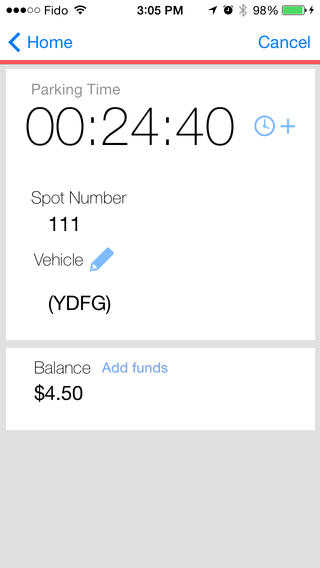Quando os clientes compram na loja Robert Simmonds Clothing, no centro de Fredericton, New Brunswick, no Canadá, não precisam se preocupar com possíveis multas de estacionamento. Isso porque Robert Simmonds é um dos cerca de 100 varejistas das cidades canadenses de Fredericton e Saint John que estão empregando beacons Bluetooth Low Energy (BLE) em conjunto com um aplicativo que permite aos consumidores pagar parquímetros. A solução, fornecida pela startup canadense HotSpot Parking, é composto por beacons fornecidos pelo polonesa Kontakt.io e um aplicativo gratuito, conhecido como HotSpot Parking, que pode ser baixado por usuários habilitados com BLE nos sites para smartphones Android, Apple ou BlackBerry. O aplicativo exibe notificações sobre os créditos de estacionamento e informações promocionais das lojas participantes.
Phillip Curley, CEO da HotSpot Parking, fundou a empresa em 2013 para fornecer uma solução wireless e app que iria ajudar os motoristas a gerir os seus pagamentos de estacionamento, protegê-los contra multas e, assim, melhorar os negócios para os comerciantes que operam dentro das áreas do centro. A iniciativa, explica Curley, foi inspirada pela necessidade de as empresas do centro aumentarem o tráfego para suas lojas e vendas, bem como a frustração de potenciais clientes quanto ao pagamento de multas de estacionamento, quando não conseguem chegar ao carro antes de expirar o pagamento. Em última análise, diz ele, os parquímetros na rua podem determinar as vendas das lojas.
Paul Simmonds, diretor executivo da Robert Simmonds Inc., concorda, dizendo que as vendas de ternos de alto valor e outras peças de vestuário são muitas vezes perdidas se um cliente corre para fora da loja antes de completar a transação porque o seu estacionamento está para expirar.
A HotSpot Parking trabalhou com a Kontakt.io para obter as balizas que a HotSpot em seguida ofereceu em uma base experimental para as empresas das duas cidades em New Brunswick. A empresa começou primeiro por comerciantes que contatam os produtos e serviços de maior valor e ainda está tentando chegar a empresas adicionais nas duas cidades, incluindo escritórios de advocacia, lojas de roupas, cafés e restaurantes. As implantações tornaram-se permanentes em agosto de 2013, em Fredericton, e há oito meses em Saint John. A HotSpot também em parceria com as autoridades locais de estacionamento quer permitir aos usuários fazer pagamentos com cartão de crédito nos parquímetros, pelo HotSpot Parking app. Até o momento, cerca de 3.000 usuários já baixaram o aplicativo.
Quem não tem o aplicativo deve baixá-lo dos sites Google Play, Apple iTunes ou Blackberry World. Ao instalar o aplicativo, o usuário pode escolher a quantidade de informação que deseja fornecer, como o seu nome, interesses comerciais e a licença de seu carro, número da placa etc. Quando chega a um parquímetro, em vez de inserir dinheiro ou um cartão de crédito na própria máquina, o usuário pode digitalizar o QR Code ou entrar um número com quatro dígitos da tag HotSpot aplicada na máquina. O aplicativo, em seguida, pede ao motorista que selecione o tempo de estacionamento pretendido.
Se um usuário paga através do tradicional método de depositar dinheiro na tela da máquina do medidor, o tempo restante será marcado na máquina. Se o indivíduo pagar usando a HotSpot app, o fiscal poderá usar seu smartphone para ver se o espaço está pago.
Quando um usuário HotSpot paga pelo estacionamento e entra em uma loja participante, o telefone dessa pessoa recebe o número de identificação exclusivo transmitido pelo beacon montado perto da entrada e o servidor HotSpot identifica e armazena que o cliente entrou. O que acontece a seguir depende da quantidade de informações pessoais que o cliente forneceu na instalação do aplicativo. Por exemplo, o sistema pode fazer o telefone mostrar uma mensagem de boas-vindas na loja, cumprimentando o cliente pelo nome. Também pode exibir informações pessoais do indivíduo para a equipe de vendas da loja, dando-lhes a oportunidade de cumprimenta-lo pessoalmente pelo nome.
Além disso, o aplicativo coleta dados sobre histórico de compras do usuário, com base nas empresas que essa pessoa entrou, quanto tempo permaneceu em cada localidade e quando. Pode, então, adaptar as ofertas promocionais enviadas para o telefone daquele cliente. As ofertas podem refletir a hora do dia, tais como uma promoção de café da manhã ou almoço.
Se o pagamento do parquímetro expirar enquanto o cliente ainda está em uma loja equipada com um beacon, a app telefone irá enviar ao indivíduo um alerta indicando a necessidade de pagamento adicional, que o cliente poderá aprovar, a fim de evitar uma multa de estacionamento. Desta forma, o comerciante pode ter certeza que o cliente não vai deixar prematuramente a loja para pagar o estacionamento. A app, diz Simmonds, aumentou as vendas da loja.

A solução também oferece vantagens para as cidades e autoridades de estacionamento, diz Curley. Quando uma pessoa deixa uma vaga de estacionamento, o medidor indica que ainda há tempo restante pago. Assim, a pessoa que chega em seguida não pode usar o tempo restante do motorista anterior.
Para ajudar a atrair cidades participantes, a HotSpot também fornece estacionamento com smartphones sem nenhum custo para os municípios ou autoridades com o aplicativo HotSpot. Isto lhes permite digitar um número de matrícula no aplicativo e ver detalhes do estacionamento pago e por quanto tempo. Curley diz que também poderia permitir ver todas vagas com parquímetros expirados dentro de uma área do centro, embora o sistema ainda não seja usado dessa maneira.
A HotSpot está oferecendo um período grátis de teste de 12 semanas para todos os novos comerciantes, após o que é cobrada uma taxa mensal para continuar o serviço. “Nosso modelo de precificação está evoluindo”, afirma Curley, e pode variar de acordo com a quantidade de ofertas promocionais para o serviço.
No entanto, Curley observa: “Estamos focados em reduzir as multas de estacionamento para os clientes potenciais”, em áreas comerciais do centro.


